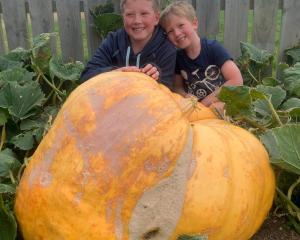The business part of the ''Battle for our Birds'' took just over three hours at the Catlins Maclennan Forest on Sunday.
Department of Conservation partnership ranger at Owaka Cheryl Pullar said it was the first ''weather window'' since the pre-feed (non-toxic) bait aerial drop on November 8.
Four helicopters dropped 72 toxic baits per hectare across the 10,000ha forest.
The small (6g) baits were distributed at 1kg per hectare in the popular recreational area, which is home to the endangered mohua, she said.
''We're doing this to protect the birds and the bats in the forest,'' she said.
While the 1080 poison remained ''very controversial'' there was growing support for its use in the forest.
''We've found a lot more acceptance of it out there now, and I think that's because people are seeing that we're using it responsibly,'' she said.
''We've had nothing go wrong during any of our operations. We've had no farm dogs die, we've had no people poisoned, we've had no waterways contaminated.''
There had been a loss of deer, but the deer population itself had not been compromised.
She said some media reports had coloured public understanding, after captive trout had been force-fed 1080 baits and then determined to have ''residual amounts'' of 1080 in their flesh.
''But that was a very false scenario; you just don't get those sorts of concentrations in natural rivers.''
While dogs would be prohibited from the forest and hunters could not take meat for human or animal consumption while bait and carcass monitoring was under way - a minimum of four months - anglers could eat the fish they caught, she said.
An overlapping 42,000ha area in the Catlins was treated by the Animal Health Board targeting possums last year.
''There are very few possums left in that block now,'' she said.
Rodents and stoats remained the major predator of endangered birds in the forest she said.
''We're coming into the breeding season now and the numbers of those predators are at the moment skyrocketing,'' she said.
''If we were to do nothing, we would have lost a vast percentage of those nesting birds this summer.
''With the mohua, it's only the female that incubates the chicks and if a rodent or a stoat gets in there, they're going to be killing the females off.''
Stoats had not been tracked, but their numbers increased in relation to increases in mouse and rat numbers, she said.












